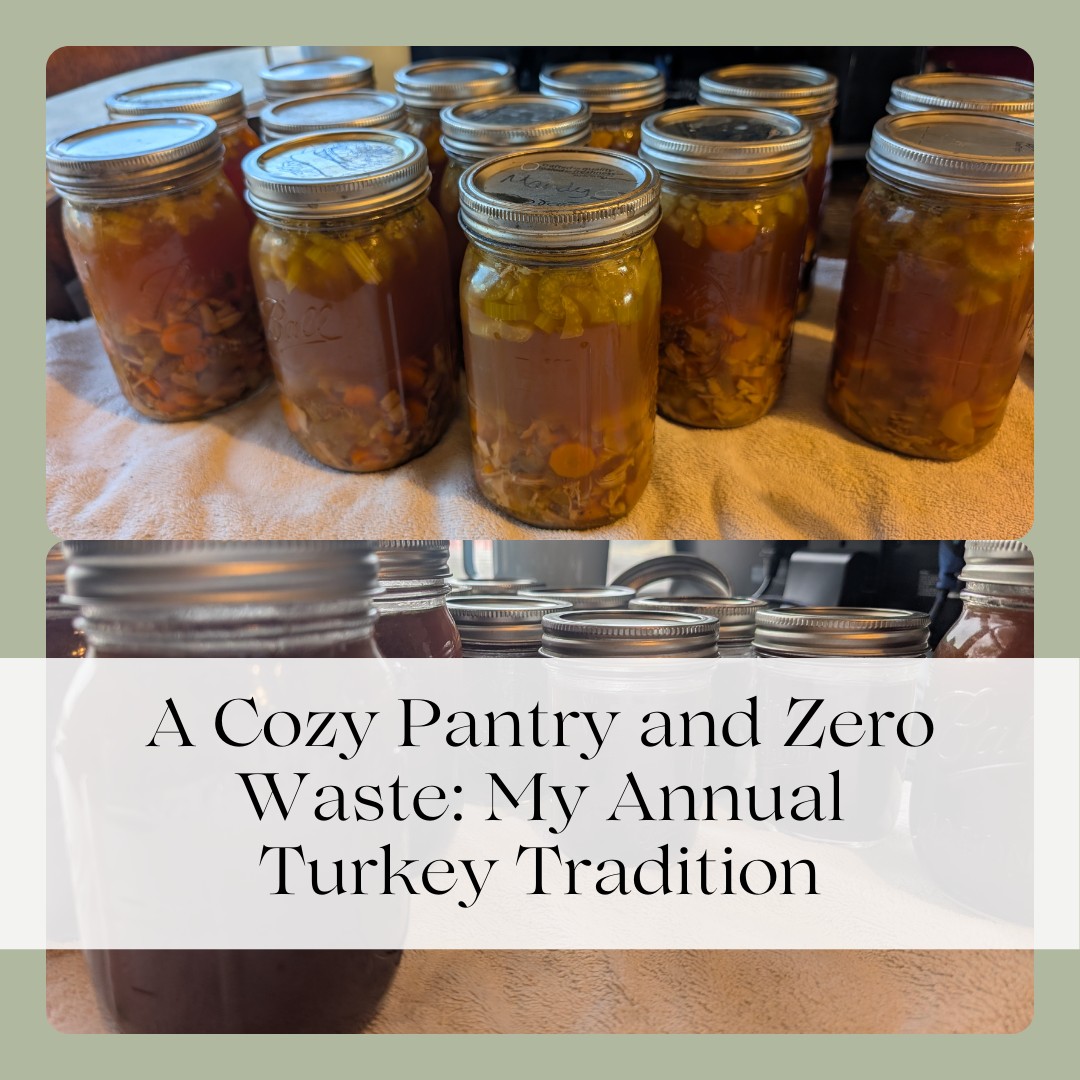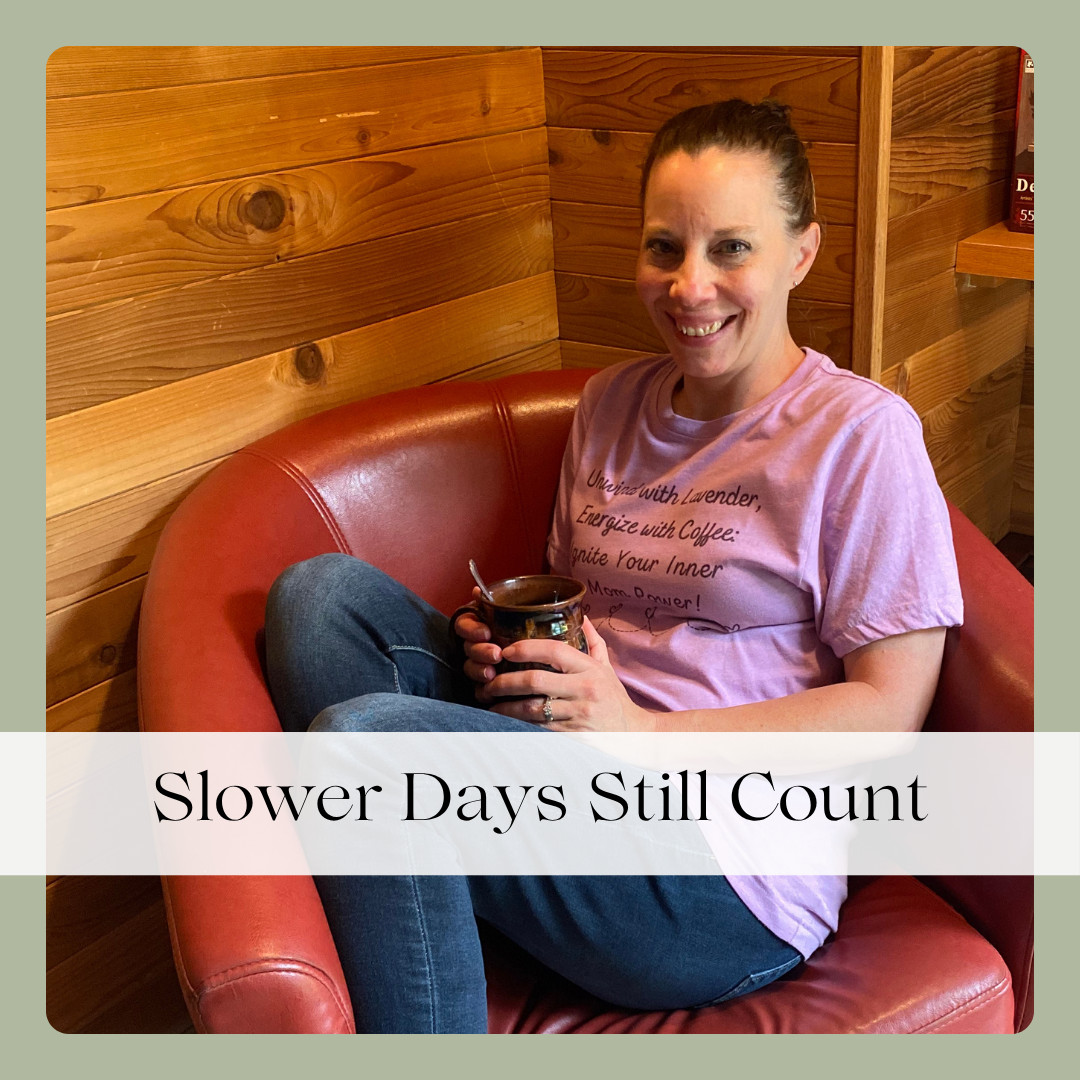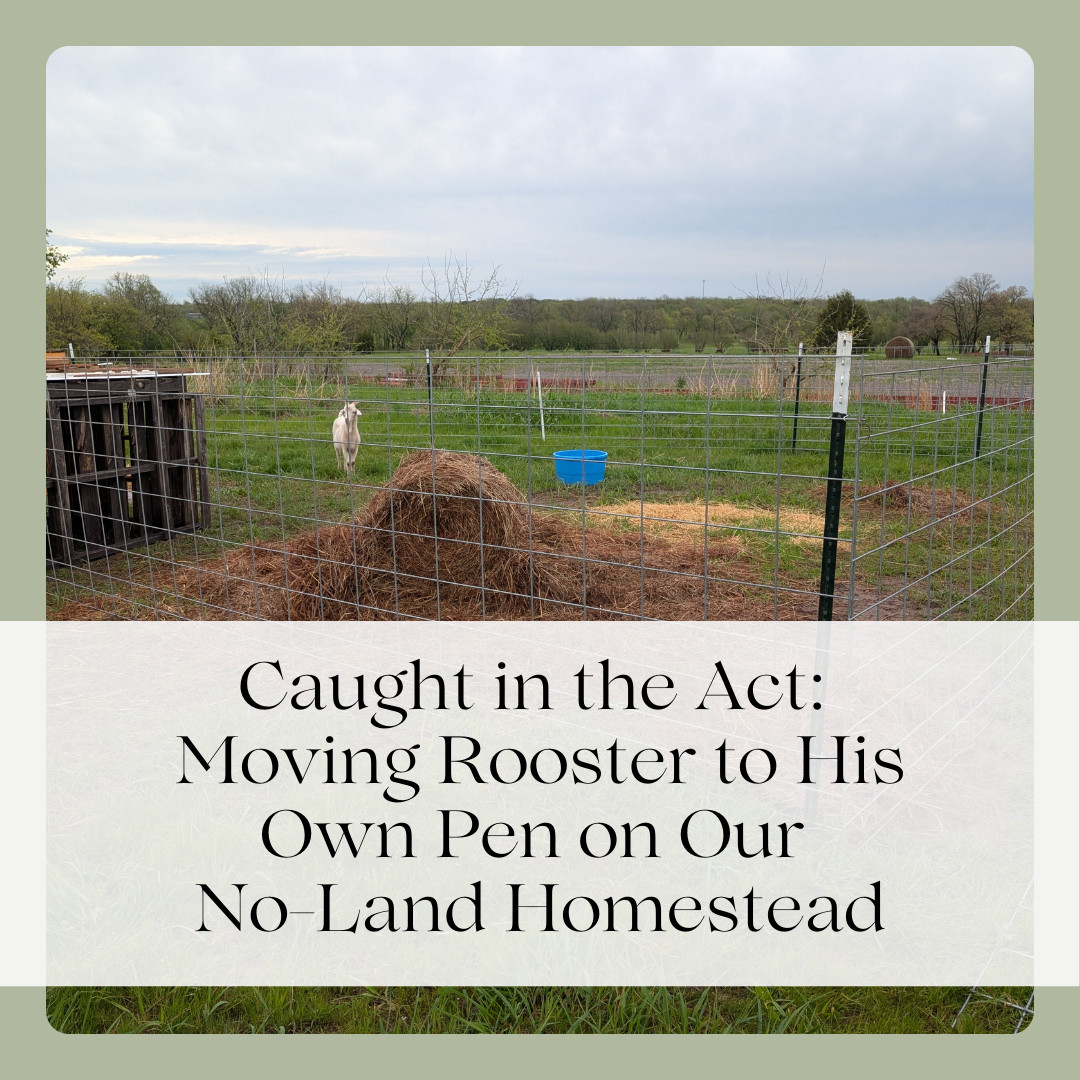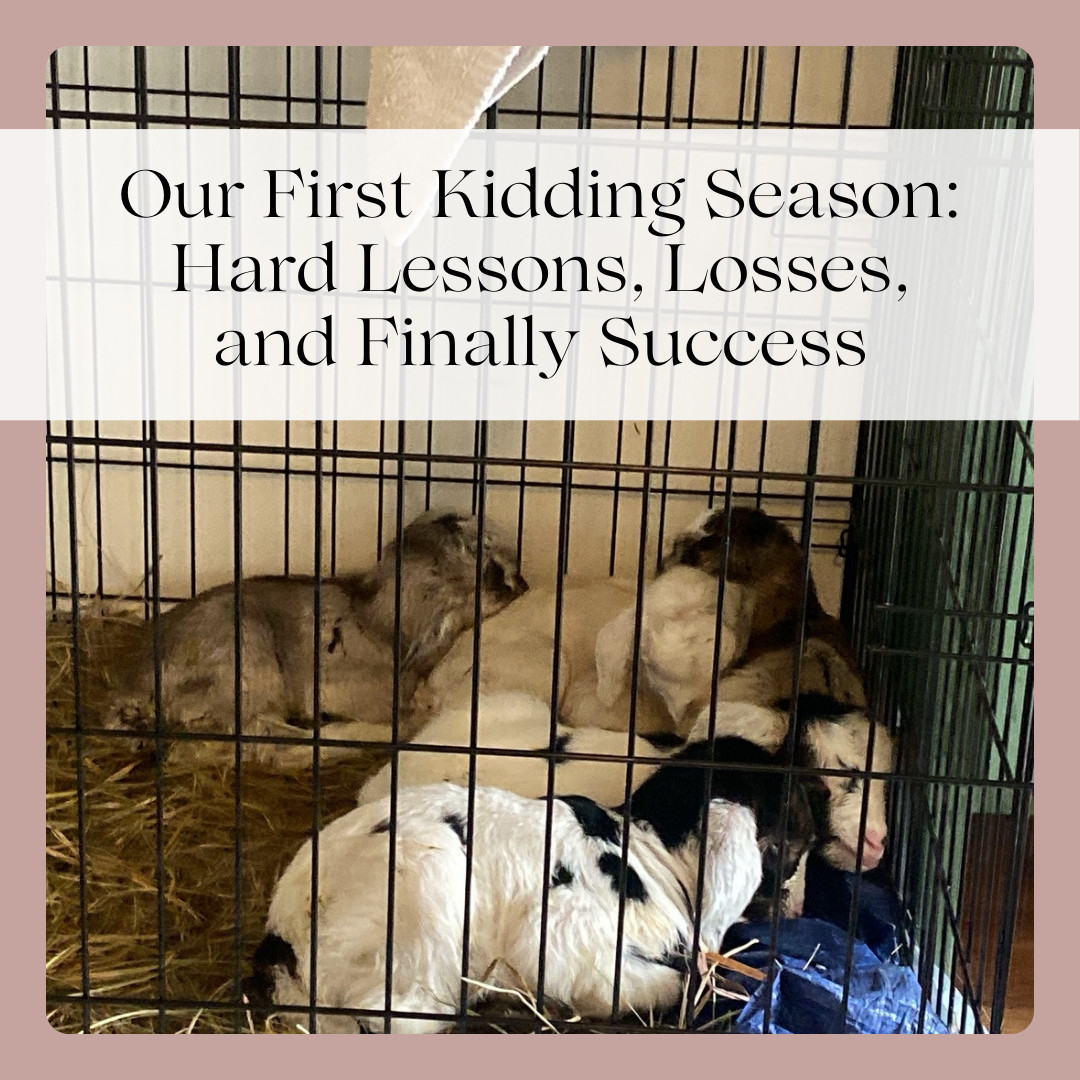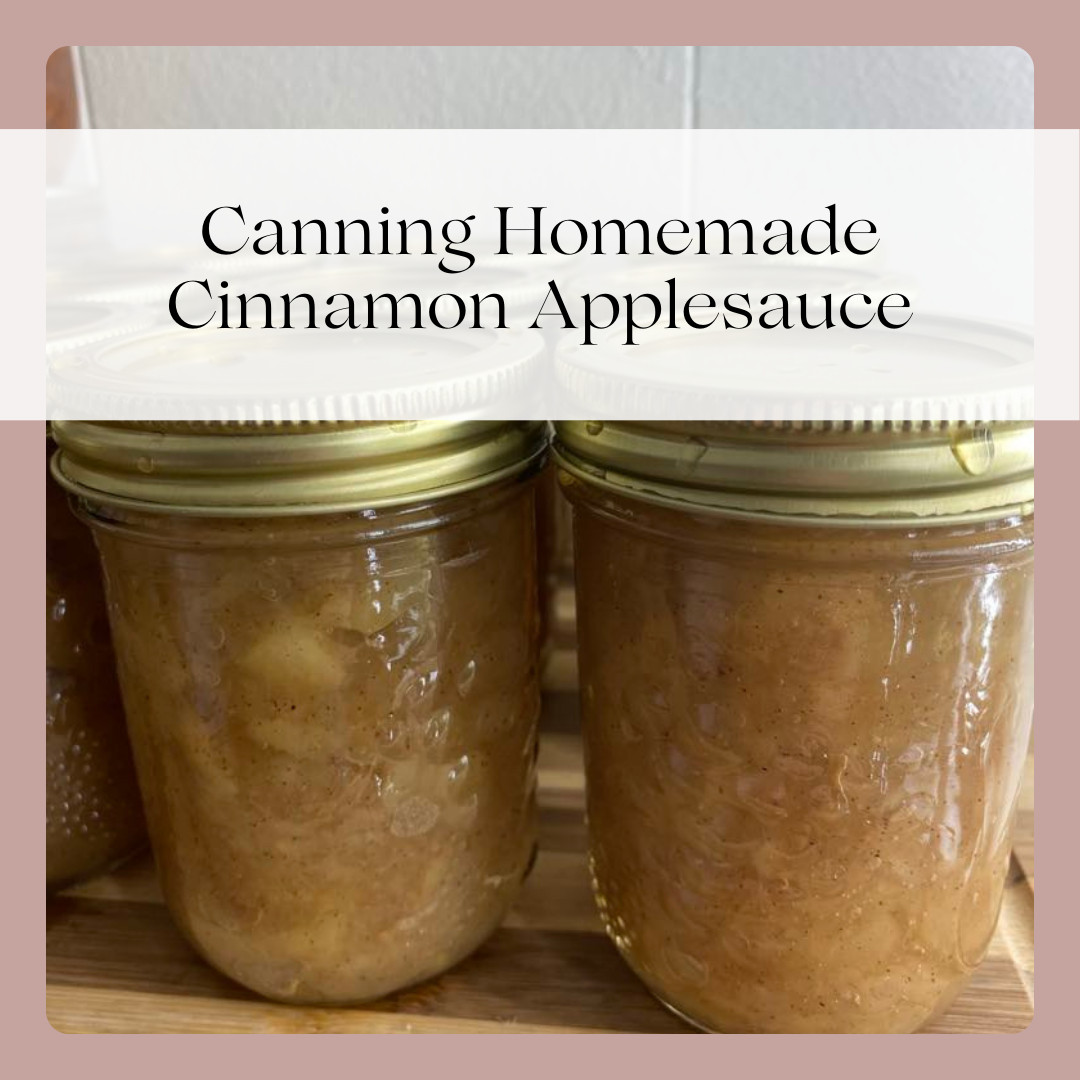
Homemade applesauce is a favorite in my family. So when we can get our hands on a lot of apples, it's one of my favorite things to make and preserve. I like to can the applesauce in 1/2 pint jars, perfect for one serving size to pack in lunches. Of course, we always have to have a little bowl of it freshly made too. It makes the house smell so good, we just can't resist!
First, the recipe for cinnamon applesauce. This recipe is for a small batch. I like to do 3x this recipe if I am just making it to eat (without canning). This gives us a few containers to stock up in the refrigerator. When I am canning, I like to do 6x the recipe.
Tip: Prepare jars, lids, and canner while applesauce is cooking to speed up the process.
Homemade Cinnamon Applesauce
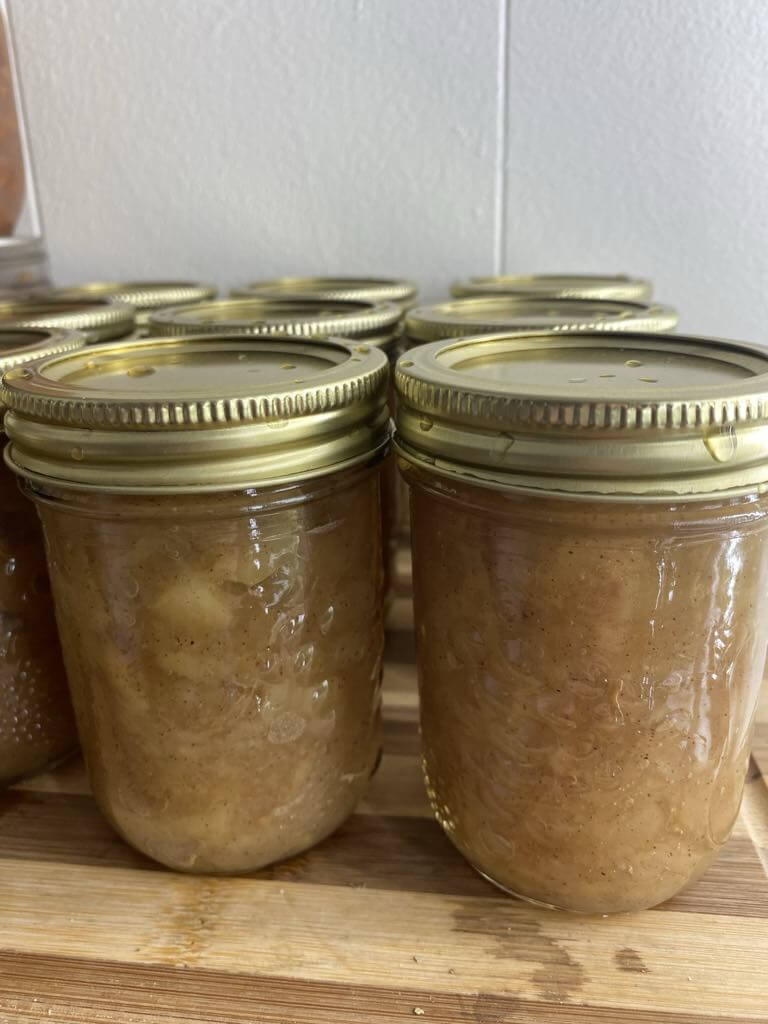
Ingredients
- 2 pounds apples*, peeled and cut into 1-inch pieces
- 2/3 cups water
- 1/2 teaspoon cinnamon
- 1/8 teaspoon sea salt*
- 2-3 teaspoons raw honey
Instructions
- Combine all ingredients, except honey, in a 2-quart saucepan. Bring to a boil over medium-high heat. Cover, lower heat to medium. Cook for 20 minutes, or until apples are soft and are easy to mash.
- Remove pan from heat and allow to cool for about 15 min before removing lid.
- Stir in honey and mash apples to desired consistency.
Notes:
*I like to use a combination of apples, depending on how tart I want it. Our favorites are green, gala, and fuji
*I like to use himalayan or celtic salt
Now that you have your delicious applesauce made, if you have any leftover, it's time to can it for longterm storage. Keep the applesauce warm while you prepare for canning.
Steps for Water Bath Canning:
1. Prepare Your Jars and Lids
- Start by inspecting your jars for any cracks or chips. Only use those in perfect condition.
- Wash your jars in hot soapy water, or run them through a dishwasher cycle to sanitize them.
- Submerge the jars in your large pot filled with water, make sure you have the canning rack in the bottom of the pot. Bring the water to a simmer (not a full boil) and keep the jars hot until you’re ready to use them. This helps prevent cracking when adding hot food.
- Place the lids in a small saucepan of simmering water (do not boil) to soften the sealing compound.
2. Prepare the Recipe
If you haven't already made the applesauce, now is the time to get it started.
If you haven't already made the applesauce, now is the time to get it started.
3. Fill the Jars
- Remove one jar at a time from the simmering water, using your jar lifter. Pour out any water inside.
- Use a funnel to fill the jar with applesauce, leaving ½-inch headspace.
- Use a non-metallic spatula to remove any trapped air bubbles by gently sliding it down the sides of the jar.
- Wipe the rim of the jar with a clean, damp cloth dipped in vinegar to ensure a proper seal.
- Place a lid on the jar and screw on the band until fingertip-tight (don’t overtighten).
4. Process the Jars
- Once the jars are filled and sealed, place them on a canning rack inside your pot of boiling water. Make sure there’s at least 1-2 inches of water covering the jars. If you need to add more water, make sure it is hot water.
- Place the lid on the pot and bring the water to a rolling boil. If using a canner, do not use the pressure cap.
- Start timing once the water reaches a full boil.
Times: Half-Pint: 15 min
Pint: 20 min
Quart: 20 min - Also be sure you adjust times for your altitude.
5. Cool the Jars
- Once the processing time is complete, turn off the burner and remove the lid. DO NOT move the canner off of the burner.
- Let sit for 5 minutes, then carefully remove the jars using the jar lifter. Place them on a towel or wooden board, leaving space between jars.
- Allow to cool for 12–24 hours without touching the lids or bands. As the jars cool, you’ll hear the satisfying "ping" sound that indicates they’ve sealed.
6. Check the Seal
- After 24 hours, check the seals by pressing down on the center of each lid. If the lid does not pop back, it’s sealed. If it pops, you’ll need to refrigerate the jar and consume the contents within a week.
- Once sealed, remove the screw-on ring. You do not want to store the jars with the ring on because it can give you a false seal. If the jar is properly sealed, the lid will stay on until you open it.
7. Store and Enjoy
- Label your jars with the contents and the date. Store them in a cool, dark place. Properly sealed jars will last up to a year or more.
- When you open the sealed jar, use a ring to keep it closed.
- Refrigerate after opening.
A Note of Caution:
When it comes to canning, safety is key. It’s essential to only use approved canning recipes from trusted sources like the USDA, Ball, or other reputable food preservation organizations. These recipes have been tested to ensure they provide the right acidity levels and processing times to prevent the growth of harmful bacteria, particularly botulism, which thrives in low-acid, improperly canned foods. By following tested recipes, you’ll ensure that your canned goods are safe for your family to enjoy.
When it comes to canning, safety is key. It’s essential to only use approved canning recipes from trusted sources like the USDA, Ball, or other reputable food preservation organizations. These recipes have been tested to ensure they provide the right acidity levels and processing times to prevent the growth of harmful bacteria, particularly botulism, which thrives in low-acid, improperly canned foods. By following tested recipes, you’ll ensure that your canned goods are safe for your family to enjoy.
Happy Canning!
🌸 From my homestead heart to yours —
If you’re walking this same journey of homemaking, decluttering, and creating a peaceful, faith-filled home, you’re not alone.
I’d love to share encouragement, simple living inspiration, and homestead wisdom with you — right to your inbox.
If you’re walking this same journey of homemaking, decluttering, and creating a peaceful, faith-filled home, you’re not alone.
I’d love to share encouragement, simple living inspiration, and homestead wisdom with you — right to your inbox.
– Amanda | The HomeGrown Mom 🌾

Canning seems to be one of those long-lost skills that is making it's way back into homes again. Yes, some have continued to do it. But with homesteading on the rise, there are so many who have never canned and didn't grow up with it either. I have been canning, off and on, for almost 15 years. It was a necessity due to some of my daughter's special dietary needs. For the past year or 2 I have been canning more regularly and it's such a great feeling when I open up my pantry and see all of my home-canned goods. Not only do I know exactly what is in each jar, but it's also a nice feeling to know that I am contributing to my family's health and that we don't have to rely on other people/stores for our food.
Now, let's talk about water bath canning. It is an excellent option for high-acid foods such as fruits, jams, jellies, and pickles. It’s easy to master and doesn’t require any fancy equipment beyond a large pot and a few canning supplies. In this post, I’ll walk you through the steps for water bath canning. Two of my favorites to can are applesauce and pear or apple slices. I'll be sharing those recipes soon!
What is Water Bath Canning?
Water bath canning is a method used for preserving high-acid foods by submerging jars in boiling water for a specified amount of time. The heat forces air out of the jars, creates a vacuum seal, and destroys mold, yeast, and bacteria that could cause spoilage.
Equipment You’ll Need:
- A large pot with a lid (canner or a deep stockpot)
- Canning rack (or something to keep jars off the bottom of the pot)
- Canning jars with lids and bands
- Jar lifter
- Ladle and funnel
- Towels and cloths for wiping jars
- Non-metallic spatula for removing air bubbles
- Labels for marking contents and date
*Most of your canning supplies can be found in a set like this: Canning Supplies Starter Kit - be sure you check measurements to ensure that the canning rack fits into you stockpot or canner.
Steps for Water Bath Canning:
1. Prepare Your Jars and Lids
- Start by inspecting your jars for any cracks or chips. Only use those in perfect condition.
- Wash your jars in hot soapy water, or run them through a dishwasher cycle to sanitize them.
- Submerge the jars in your large pot filled with water, make sure you have the canning rack in the bottom of the pot. Bring the water to a simmer (not a full boil) and keep the jars hot until you’re ready to use them. This helps prevent cracking when adding hot food.
- Place the lids in a small saucepan of simmering water (do not boil) to soften the sealing compound.
2. Prepare the Recipe
Make sure whatever you are canning is made and ready to go before you start the canning process. Some items, like applesauce, can be cooking while you prep your canner and bring it up to the proper heat.
Make sure whatever you are canning is made and ready to go before you start the canning process. Some items, like applesauce, can be cooking while you prep your canner and bring it up to the proper heat.
3. Fill the Jars
- Remove one jar at a time from the simmering water, using your jar lifter. Pour out any water inside.
- Use a funnel to fill the jar with your prepared food, leaving the appropriate headspace (usually 1/2 inch for fruits).
- Use a non-metallic spatula to remove any trapped air bubbles by gently sliding it down the sides of the jar.
- Wipe the rim of the jar with a clean, damp cloth dipped in vinegar to ensure a proper seal.
- Place a lid on the jar and screw on the band until fingertip-tight (don’t overtighten).
4. Process the Jars
- Once the jars are filled and sealed, place them on a canning rack inside your pot of boiling water. Make sure there’s at least 1-2 inches of water covering the jars. If you need to add more water, make sure it is hot water.
- Place the lid on the pot and bring the water to a rolling boil. If using a canner, do not use the pressure cap.
- Start timing once the water reaches a full boil. Most fruit recipes require 20–30 minutes of processing, but always refer to your recipe for exact times.
- Also be sure you adjust times for your altitude.
5. Cool the Jars
- Once the processing time is complete, turn off the burner and remove the lid. DO NOT move the canner off of the burner.
- Let sit for 5 minutes, then carefully remove the jars using the jar lifter. Place them on a towel or wooden board, leaving space between jars.
- Allow to cool for 12–24 hours without touching the lids or bands. As the jars cool, you’ll hear the satisfying "ping" sound that indicates they’ve sealed.
6. Check the Seal
- After 24 hours, check the seals by pressing down on the center of each lid. If the lid does not pop back, it’s sealed. If it pops, you’ll need to refrigerate the jar and consume the contents within a week.
- Once sealed, remove the screw-on ring. You do not want to store the jars with the ring on because it can give you a false seal. If the jar is properly sealed, the lid will stay on until you open it.
7. Store and Enjoy
- Label your jars with the contents and the date. Store them in a cool, dark place. Properly sealed jars will last up to a year or more.
- When you open the sealed jar, use a ring to keep it closed.
- Refrigerate after opening.
A Note of Caution:
When it comes to canning, safety is key. It’s essential to only use approved canning recipes from trusted sources like the USDA, Ball, or other reputable food preservation organizations. These recipes have been tested to ensure they provide the right acidity levels and processing times to prevent the growth of harmful bacteria, particularly botulism, which thrives in low-acid, improperly canned foods. By following tested recipes, you’ll ensure that your canned goods are safe for your family to enjoy.
When it comes to canning, safety is key. It’s essential to only use approved canning recipes from trusted sources like the USDA, Ball, or other reputable food preservation organizations. These recipes have been tested to ensure they provide the right acidity levels and processing times to prevent the growth of harmful bacteria, particularly botulism, which thrives in low-acid, improperly canned foods. By following tested recipes, you’ll ensure that your canned goods are safe for your family to enjoy.
Happy Canning!
🌸 From my homestead heart to yours —
If you’re walking this same journey of homemaking, decluttering, and creating a peaceful, faith-filled home, you’re not alone.
I’d love to share encouragement, simple living inspiration, and homestead wisdom with you — right to your inbox.
If you’re walking this same journey of homemaking, decluttering, and creating a peaceful, faith-filled home, you’re not alone.
I’d love to share encouragement, simple living inspiration, and homestead wisdom with you — right to your inbox.
– Amanda | The HomeGrown Mom 🌾
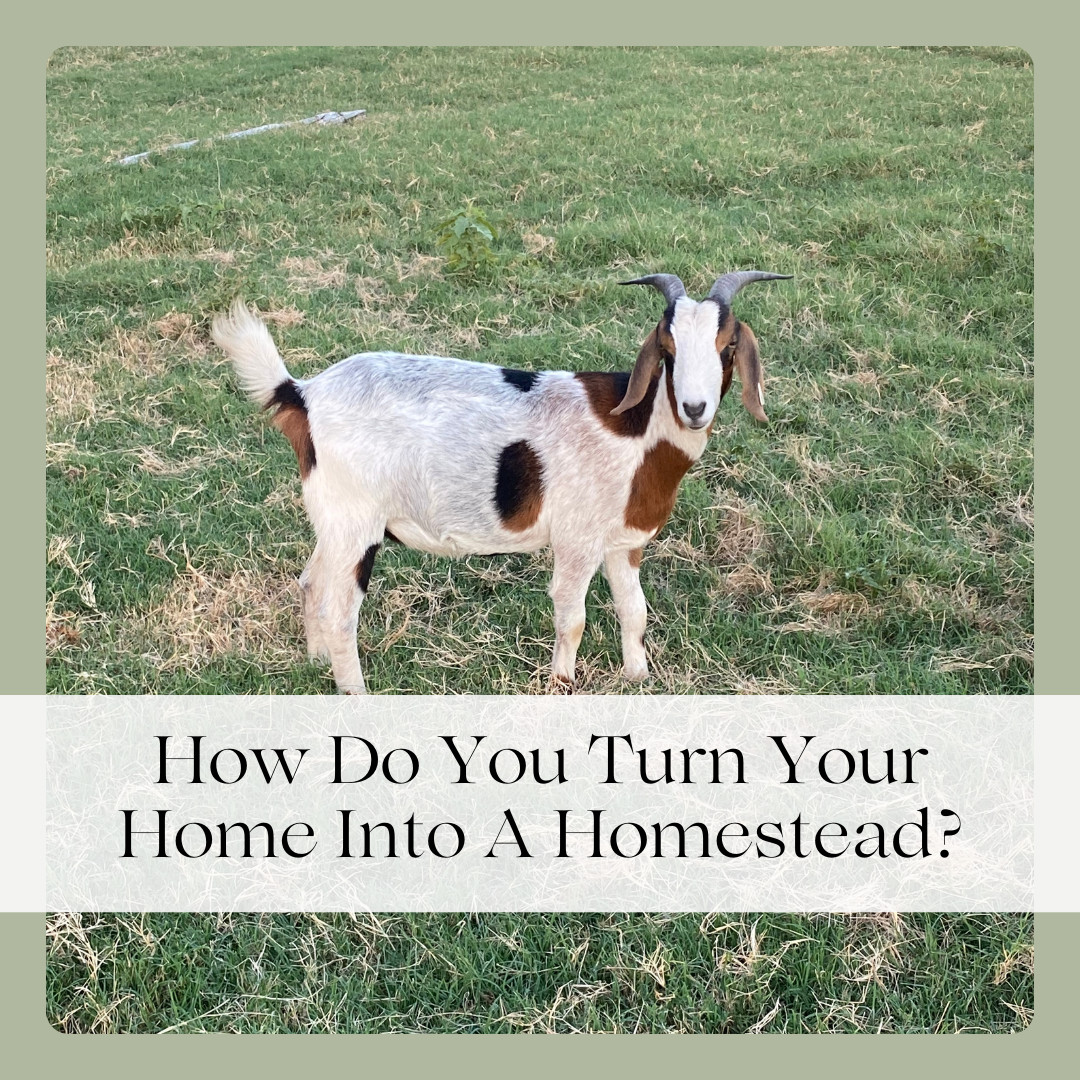
If you have been following me for very long, you know that my family is diving into homesteading. In truth, we have been inching towards it for about 15 years. However, we have never owned our own land and the homes we have lived in have had very little land. But, we started a small garden, learned to can our own foods, cook/bake from scratch, learned about natural remedies for our health...the list goes on.
In the past year, we also added livestock...again, not having any land of our own. We have 50+ goats (for meat), 2 great pyrenees pups that will soon be guarding the goats (currently on another friend's land), did a large scale garden (again, on a friend's land), and also have a cow (once again, on another friend's land). And we just added a set of bunnies (to breed) to our backyard. Boy, that was a mouthful to type!
The general idea is that you sometimes have to think outside the box. Our goal is to own our own land soon, with many acres. We will then move all of our livestock and gardening onto that land. Little by little, we are turning our home into a homestead. We may be doing it all a tad backwards, but this way, we won't have to do it all at once. We have a lot of what we need, we just need the land to go with it.
We also do some gardening where we live. I have a windowsill herb garden, use a tower garden to grow certain things year-round indoors, and we have a few fruit trees in containers, as well as some flowers and other herbs outside.
Since we are fairly new to the livestock aspect of homesteading, we have found some great homesteaders to follow. One of our favorites is Homesteaders of America. They put together so much information from all areas of homesteading. It's pretty much a one-stop shop for your homesteading needs. My guys have learned so much through them about livestock, I have learned even more about canning and preserving foods. Trust me, it's one to check out for sure!
No matter where you live, if you have a heart to homestead, start looking around and gathering resources. Chances are you will find your own little community to join efforts with. It's such an amazing feeling to know that you are able to provide so much not only for your family, but for others too.
Happy Homesteading!
Happy Homesteading!
🌸 From my homestead heart to yours —
If you’re walking this same journey of homemaking, decluttering, and creating a peaceful, faith-filled home, you’re not alone.
I’d love to share encouragement, simple living inspiration, and homestead wisdom with you — right to your inbox.
If you’re walking this same journey of homemaking, decluttering, and creating a peaceful, faith-filled home, you’re not alone.
I’d love to share encouragement, simple living inspiration, and homestead wisdom with you — right to your inbox.
– Amanda | The HomeGrown Mom 🌾

As a busy homemaker, homesteading mom and wife, it can be hard to find time to "just be". Our days are filled with grocery shopping, housework, keeping things organized around the home, keeping the schedule straight for the family, making meals from scratch...the list seems endless. So what can we, as moms, do when our days seem so overwhelming and we just have a hard time functioning and keeping up?
First and foremost, start your day with God. This can be a prayer or meditation as you start your day. It may be a quite study time as you have your first cup of coffee. Whatever it is, always start your day with God.
Make a list of things that you need to get done. Prioritize your list and choose your top 3 that HAVE to be done. This helps clear your mind and free some space to help you manage your day.
But what if you have done these things and you still feel overwhelmed? That's when I like to do a quick little mind reset using the Aroma Reset. It's a branch of the Aroma Freedom Technique (AFT) that is super quick and very beneficial. I keep a roller bottle with the Memory Release Blend of oils in it, ready to use at a moments notice. When I feel overwhelmed or super stressed out, I grab the bottle and roll it on my wrists and the back of my neck. I take a moment to breath it in and relax. Seriously, it only takes about 60 seconds and my brain resets and I am able to better accomplish the task at hand.

Need to know more about this quick reset? I offer a 30-minute one-on-one coaching call where I not only walk you through this reset, I also walk you through an extended version (also super quick to use!) so that you have the tools you need to do these techniques throughout your day as needed. This session also includes a sample of the memory release blend that you can carry along with you and use as needed.
Trust me, your whole family will benefit from you taking a minute here and there throughout your day to reset your mind and let go of the stress and overwhelm.
If you want to know more about the Aroma Freedom Technique and how it works, check out these related blog posts:
The Aroma Freedom Technique (AFT)
The Aroma Freedom Technique (AFT)
#deepbreath
#inhalepeace
#exhaledoubt
#regainclarity
#inhalepeace
#exhaledoubt
#regainclarity
🌸 From my homestead heart to yours —
If you’re walking this same journey of homemaking, decluttering, and creating a peaceful, faith-filled home, you’re not alone.
I’d love to share encouragement, simple living inspiration, and homestead wisdom with you — right to your inbox.
If you’re walking this same journey of homemaking, decluttering, and creating a peaceful, faith-filled home, you’re not alone.
I’d love to share encouragement, simple living inspiration, and homestead wisdom with you — right to your inbox.
– Amanda | The HomeGrown Mom 🌾
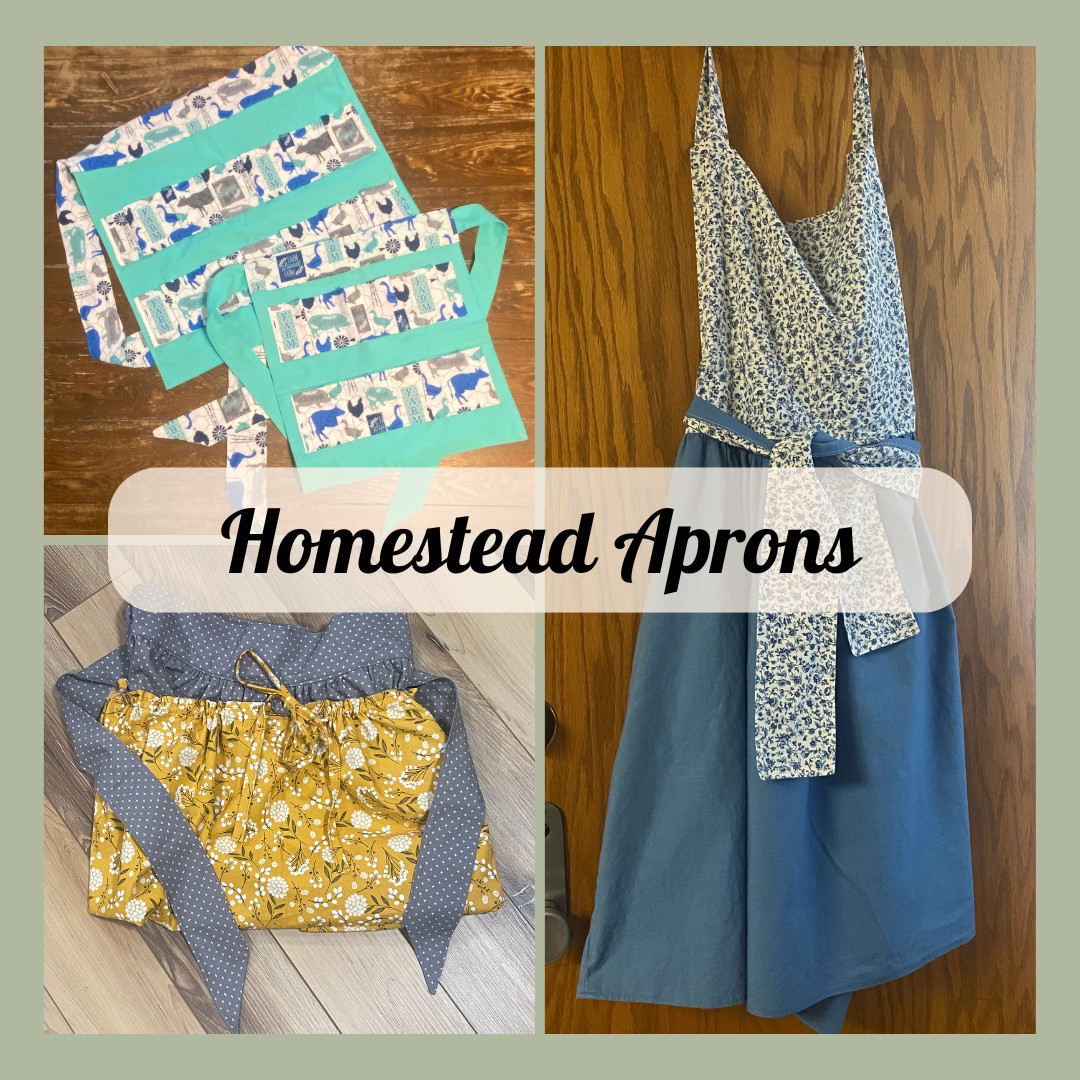
I have a new fun project that I just can't get enough of...ok, maybe it's more than just one new project. I've been busy making aprons. It all started with a cute little egg gathering apron, then I found an adorable harvest apron. I shared pictures of them because I LOVE the fabrics and how they all came together. Then that lead to making yet another cute apron!
One of my goals with homesteading is to find practical things to use around the home. I find it a big bonus when it's something I can be crafty with.
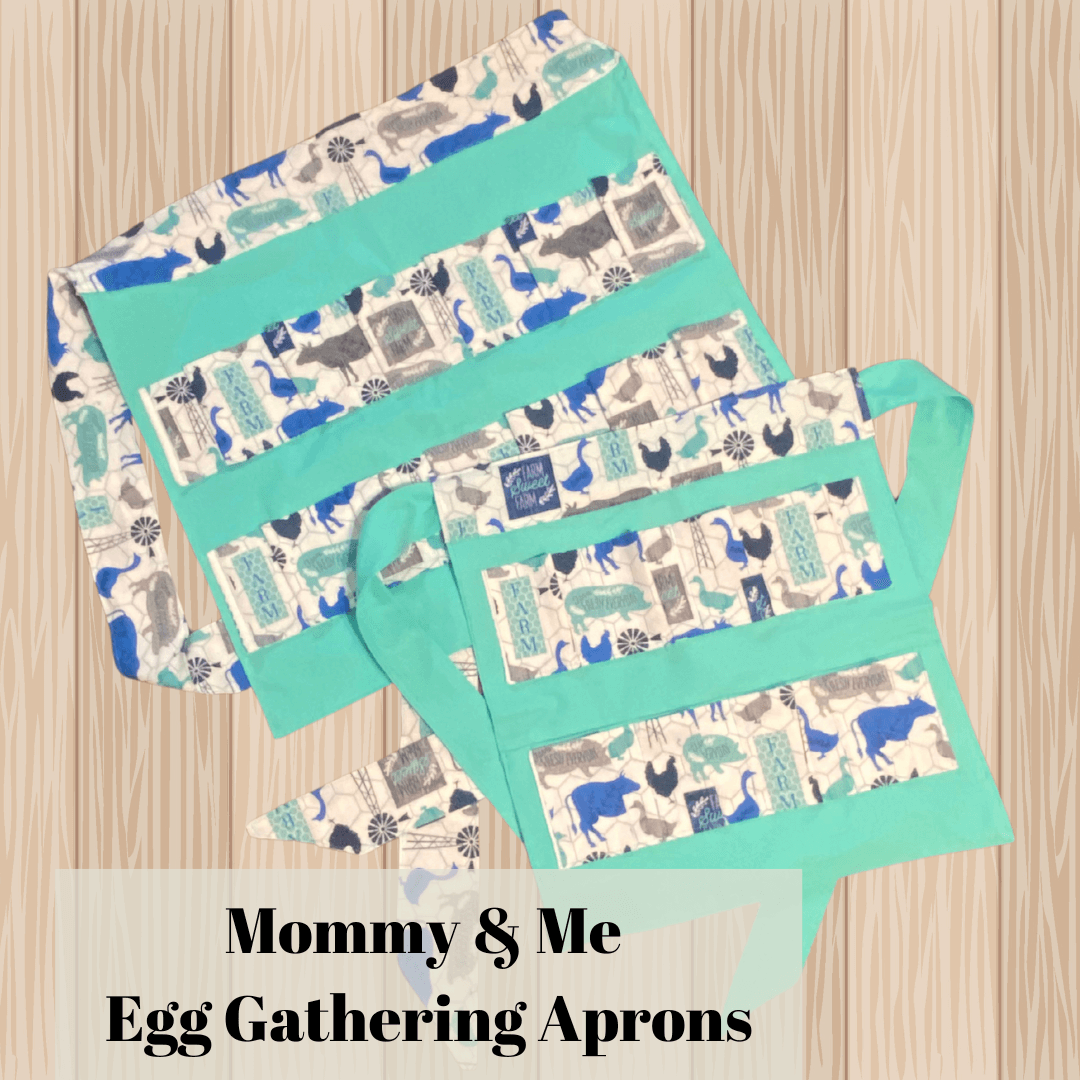 Egg Gathering Apron
Egg Gathering ApronFirst, let's talk about this adorable egg gathering apron. What a neat idea! It has pockets for up to a dozen eggs. Perfect for daily gathering of fresh eggs. After sharing a few that I made, I was commissioned to make a toddler size apron. How fun!! Instead of making an apron that would quickly be outgrown, I opted to make a grow-with-me apron. It fits toddler-child sizes and is a great way to let your littles help you with egg gathering. No more smashed eggs in little toddler pant pockets (yes, this is why I was asked to make a toddler size!).
Shown here are the 2 different sizes. The smaller one folds up so that the toddler size has just the top row of pockets. What a fun mommy and me gift set!
Harvest Apron
Next up, the super fun harvest  apron. I can't get enough of this one! There are SOOOO many cute fabric options. I have been told that they also work great for egg gathering, which makes this one perfect for any homestead mom! This multi-purpose apron can be used for gardening and egg gathering. How neat is that?!
apron. I can't get enough of this one! There are SOOOO many cute fabric options. I have been told that they also work great for egg gathering, which makes this one perfect for any homestead mom! This multi-purpose apron can be used for gardening and egg gathering. How neat is that?!
 apron. I can't get enough of this one! There are SOOOO many cute fabric options. I have been told that they also work great for egg gathering, which makes this one perfect for any homestead mom! This multi-purpose apron can be used for gardening and egg gathering. How neat is that?!
apron. I can't get enough of this one! There are SOOOO many cute fabric options. I have been told that they also work great for egg gathering, which makes this one perfect for any homestead mom! This multi-purpose apron can be used for gardening and egg gathering. How neat is that?!I have made so many adorable fabric combos with this one. I basically want to keep one of each of them. But, I have limited myself to just 2. After all, if one gets dirty, I need time to get it all washed up and ready to use again without having to do without one for the next days' harvest.
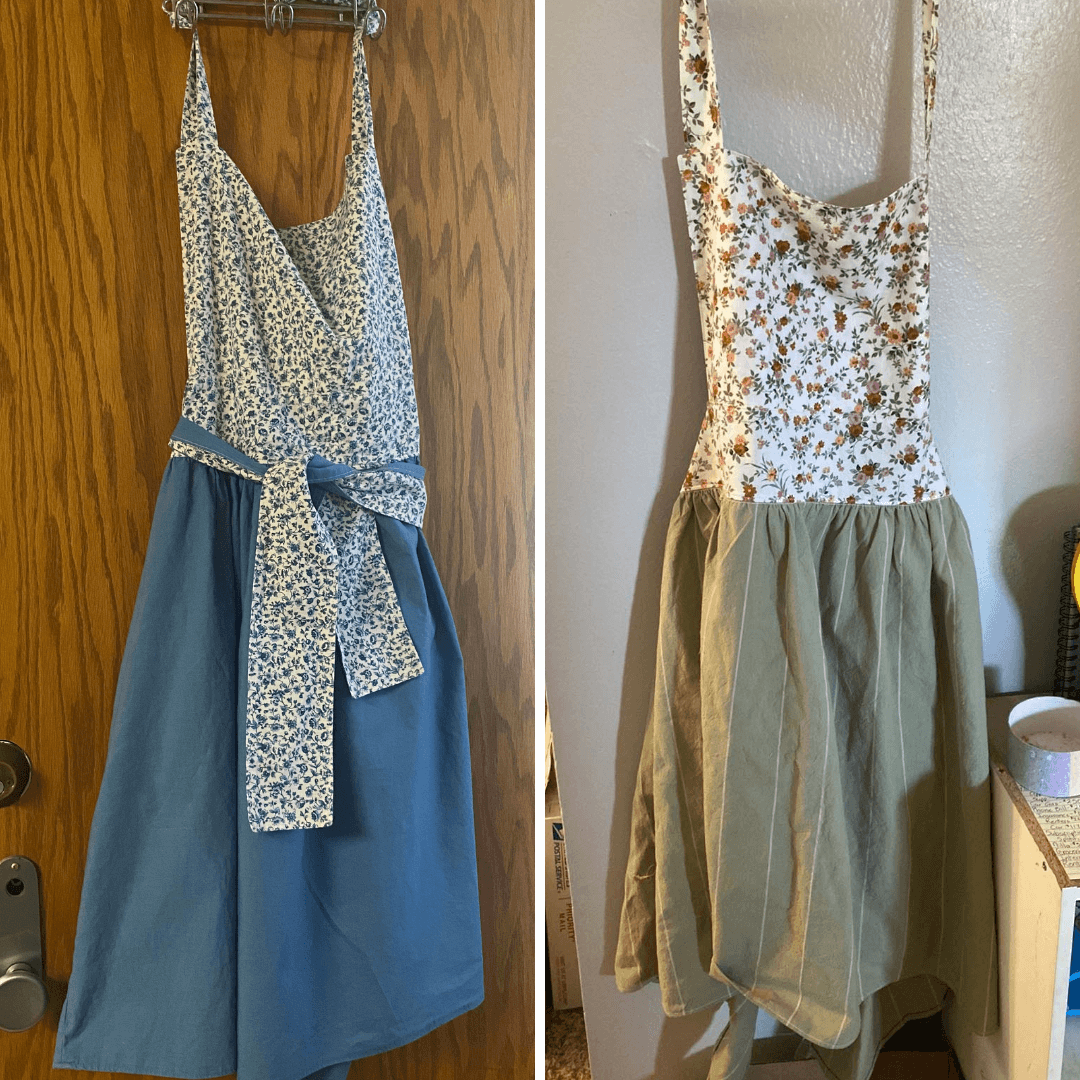 Full Apron with Pockets
Full Apron with PocketsThe latest edition to my apron making is a full apron with a bib. It even has pockets on each side! Sadly, I don't have as good of a picture to share with this one. I was on a bit of a time crunch so I considered myself lucky to even snap a pic. This particular one is custom made and a plus size. It comes in all sizes from adult small all the way up to a 3xl. Super cute!
If you would like to custom order an apron, please send me a message! Message Amanda
If you would like to make your own, I'll share some links below. I did make some adjustments on the egg gathering apron, but there are several great patterns you can use.
🌸 From my homestead heart to yours —
If you’re walking this same journey of homemaking, decluttering, and creating a peaceful, faith-filled home, you’re not alone.
I’d love to share encouragement, simple living inspiration, and homestead wisdom with you — right to your inbox.
If you’re walking this same journey of homemaking, decluttering, and creating a peaceful, faith-filled home, you’re not alone.
I’d love to share encouragement, simple living inspiration, and homestead wisdom with you — right to your inbox.
– Amanda | The HomeGrown Mom 🌾




